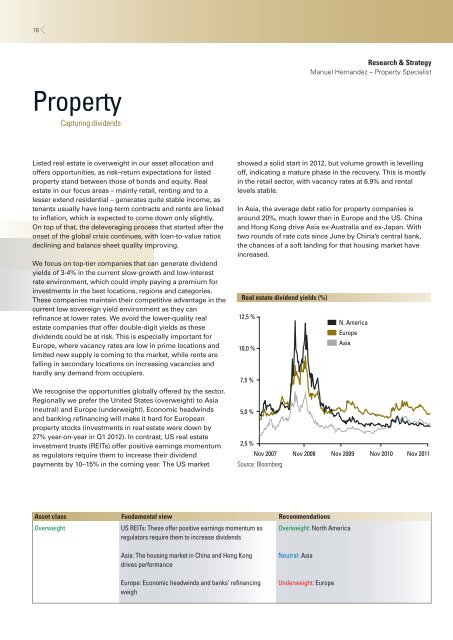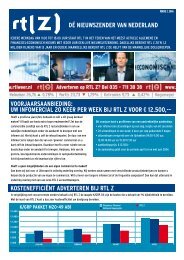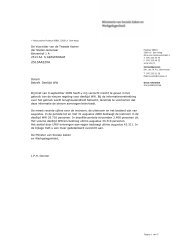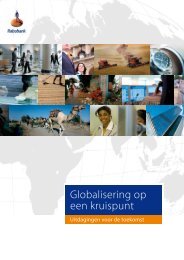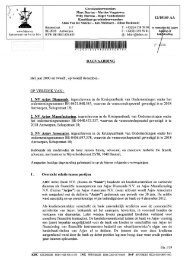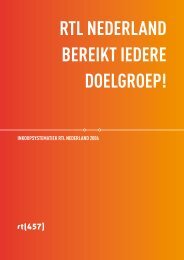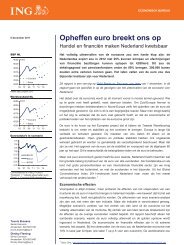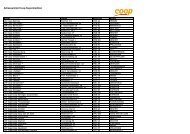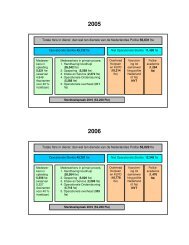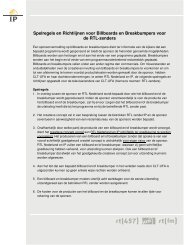Didier Duret - RTL.nl
Didier Duret - RTL.nl
Didier Duret - RTL.nl
You also want an ePaper? Increase the reach of your titles
YUMPU automatically turns print PDFs into web optimized ePapers that Google loves.
16<br />
Property<br />
Capturing dividends<br />
Listed real estate is overweight in our asset allocation and<br />
offers opportunities, as risk–return expectations for listed<br />
property stand between those of bonds and equity. Real<br />
estate in our focus areas – mai<strong>nl</strong>y retail, renting and to a<br />
lesser extend residential – generates quite stable income, as<br />
tenants usually have long-term contracts and rents are linked<br />
to inflation, which is expected to come down o<strong>nl</strong>y slightly.<br />
On top of that, the deleveraging process that started after the<br />
onset of the global crisis continues, with loan-to-value ratios<br />
declining and balance sheet quality improving.<br />
We focus on top-tier companies that can generate dividend<br />
yields of 3-4% in the current slow-growth and low-interest<br />
rate environment, which could imply paying a premium for<br />
investments in the best locations, regions and categories.<br />
These companies maintain their competitive advantage in the<br />
current low sovereign yield environment as they can<br />
refinance at lower rates. We avoid the lower-quality real<br />
estate companies that offer double-digit yields as these<br />
dividends could be at risk. This is especially important for<br />
Europe, where vacancy rates are low in prime locations and<br />
limited new supply is coming to the market, while rents are<br />
falling in secondary locations on increasing vacancies and<br />
hardly any demand from occupiers.<br />
We recognise the opportunities globally offered by the sector.<br />
Regionally we prefer the United States (overweight) to Asia<br />
(neutral) and Europe (underweight). Economic headwinds<br />
and banking refinancing will make it hard for European<br />
property stocks (investments in real estate were down by<br />
27% year-on-year in Q1 2012). In contrast, US real estate<br />
investment trusts (REITs) offer positive earnings momentum<br />
as regulators require them to increase their dividend<br />
payments by 10–15% in the coming year. The US market<br />
Research & Strategy<br />
Manuel Hernandez – Property Specialist<br />
showed a solid start in 2012, but volume growth is levelling<br />
off, indicating a mature phase in the recovery. This is mostly<br />
in the retail sector, with vacancy rates at 6.9% and rental<br />
levels stable.<br />
In Asia, the average debt ratio for property companies is<br />
around 20%, much lower than in Europe and the US. China<br />
and Hong Kong drive Asia ex-Australia and ex-Japan. With<br />
two rounds of rate cuts since June by China’s central bank,<br />
the chances of a soft landing for that housing market have<br />
increased.<br />
Real estate dividend yields (%)<br />
12,5 %<br />
10,0 %<br />
7,5 %<br />
5,0 %<br />
N. America<br />
Europe<br />
Asia<br />
2,5 %<br />
Nov 2007 Nov 2008 Nov 2009 Nov 2010 Nov 2011<br />
Source: Bloomberg<br />
Asset class Fundamental view Recommendations<br />
Overweight<br />
US REITs: These offer positive earnings momentum as<br />
regulators require them to increase dividends<br />
Overweight: North America<br />
Asia: The housing market in China and Hong Kong<br />
drives performance<br />
Europe: Economic headwinds and banks’ re financing<br />
weigh<br />
Neutral: Asia<br />
Underweight: Europe


